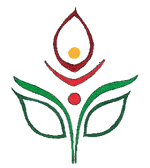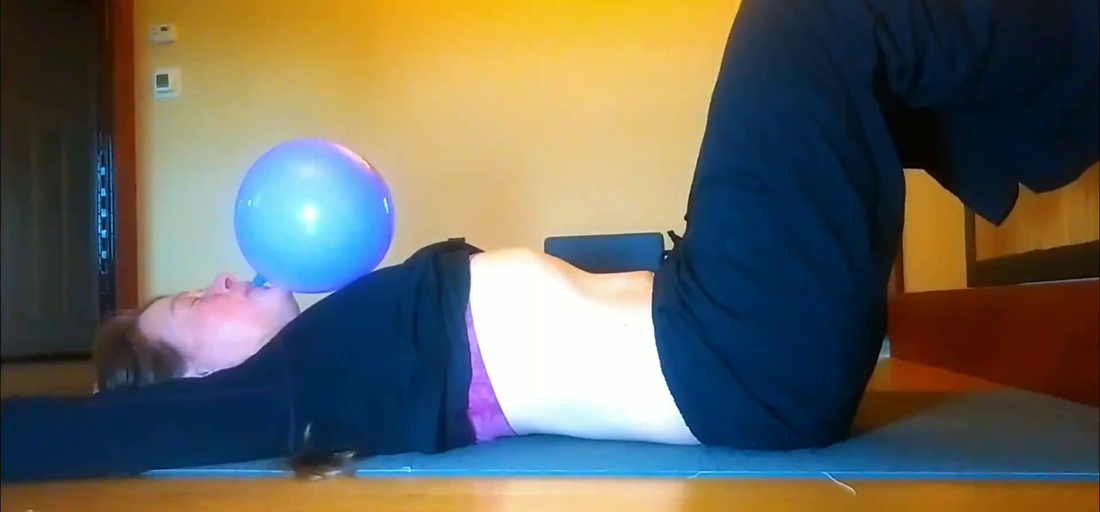|
Okay- I don’t know why, but I don’t remember ever being cued to breath with movement until I took an online, prerecorded yoga class by Jason Crandell. I’d been practicing yoga for many years by then. To that point, I’d gathered from my teachers that “breathing practice” aka pranayama, was the next step; that pranayama was advancing one’s yoga. From all the standard yoga texts I was reading, it came to me as complicated. Pranayama, #4 of 8 rungs (Yoga Sutras 2.49-2.53) Remember, my motivation in life is to feel better. On simple terms, I am a sensation junkie- when something gives me an overall sense of wellbeing, I will chase it, wanting to know how to keep it. I tried, really tried, but honestly didn’t experience feeling better from these instructions of Patanjali’s Yoga Sutras or other yoga sutras such as in the Bhagavad Gita or the Vijñāna Bhairava Tantra. What really helped was the simple, “Inhale, step back into a lunge. Exhale, downward facing dog” cue an online yoga teacher would make. I would get 45-90 minutes a day of breathing, and then the remaining 15-1/2 hours of my waking hours who knows? Well, I do know- and I just heard a fantastic name for how I (barely) breath as I live through my days: “No-Haler”. From Dr. Belisa Vranich: “No inhale: no exhale; this breather just "hovers:" sipping in air then barely letting it out. Your body doesn't expand and contract: it barely moves at all. These people tend to brace their bodies and make very little movement at all, saying their breath feels stuck in both directions.” I could write a long memoir of my maybe lifetime of no-haling. I learned the years my “freeze or faint” response is no-haling. I now know that chronic pain from auto immune disease both became worse and made the no-haling worse. I now know that severe digestion problems that led to edema were also in the vicious cycle of no-haling. Peristalsis is directly and immediately affected by the movement of the guts, which are moved by the diaphragm. Peristalsis is also directly affected by the nervous system- parasympathetic nervous system and sympathetic system tell the body to rest and digest or fight, flight freeze or faint. The movement of the breath informs the nervous system both by nerve signals and by relaxing the muscles around the nerve ganglia or squeezing them. How about 4 bouts of pneumonia, starting at 11 months old up to 10 years ago at age 55? A peak experience of no-haling. Oh, and then there’s losing the mobility of my shoulders and my never ending quest to perform even just one (!) correct push up. The shoulder girdle is strengthened and moved by muscles that attach to the ribs. So if those ribs aren’t squeezing and stretching with a range of motion– no-haling creates no moving- the muscles of the shoulder no longer squeeze and stretch which a range of motion or stability. In my case it got so bad for a while I could no longer raise my right arm overhead. Every single of these are symptoms of no-haling- yet none identified as such. In my own lurking self- knowing, they had to be related with each other, as parts of a whole system that was needing something missing. The one thing I could clue into was that when I did something that forced my body to breath fulling than my subconscious habit, I always felt so much better. So, the few times I was exposed to some non- impenetrable information about breathing, I gave it my attention. September of 2016, I knew the answer was breathing in a yoga teacher training with Susan Grote, PT, CYI. She touched on it all- the anatomy, physiology, kinesiology, emotional impacts and outcomes. She ultimately left me with the need, and I mean need, to learn more. I came up short in my quest, sadly. I was 50 years old when I was in that training. 12 hours of exposure to what I had been waiting for years unfortunately wasn’t going to undo 49 years of breathing patterns. Sigh. I wish it could be that sudden change where I lived happily ever after. When the gym trainer told me I wasn’t breathing during while I trained and taught me to “exhale with the exertion”, I had my first clue that all that fantastic stuff I had learned in that teacher training wasn’t quite so easy to actualize. Last year, taking the Pregnancy & Postpartum Corrective Exercise Specialist Certification, I videoed myself breathing for the Breathing Module of the course. Major bummer and what a revelation: my ribs barely moved at all through exhale and inhale! My lungs are inside those ribs- my ribs should be moving for the inflation and moving when the lungs deflate. But they were doing neither. Well, no wonder I feel stuck, breathing, moving and digesting. But, through that course I finally had at least clear instructions for practices I could undertake to exercise the reparatory muscles and postural muscles needed to improve how I feel. I also came to understand muscular and postural tendencies I have that are interfering with good breathing mechanics. Turns out the oft-given cue “squeeze the glutes” is a not universally applicable. I’d heard of James Nestor and his new book Breath, the New Science of a Lost Art through Anatomy Trains. I deeply respect the Anatomy Trains team, so I checked out the audiobook from the King County Library. I was hooked immediately: "It started several years ago, I was eating right and exercising but kept having chronic respiratory problems — bronchitis — which was turning into mild pneumonia year after year. My doctor suggested a breathing class.” It was one of those audiobooks I almost couldn’t turn off. I identified with the chronic respiratory and digestive issues and I recognized many of the chronic causes. Most of all, the 6 key take-aways he arrived at were familiar and completely feasible.
When it was done, I went looking for podcasters who had interviewed James Nestor. Right off the bat, I discovered the Take a Deep Breath podcast and channel. I’ve become an instant and several times a day user of this guy’s guided breathing videos. Mike Maher, the creator is putting out there for free stuff that will change your physical and mental health. This one is my favorite: Deep Breathing Exercise for Beginners | TAKE A DEEP BREATH. Completely simple, one hour of breathing, no voice, no music. I use it because I don’t breath when I eat, I don’t breath when I use the computer, I don’t breath when I’m busy thinking! It turns out there are numerous non- yogi, non- Buddhist travelers on the journey into breathing, or what James Nestor calls “pulmonauts”. I had no idea! This circles us back to Belisa Vranich’s book Breath. I listened to this next simply because I heard her interviewed and the audiobook was available. This was the first practical, no-frills, how to instruction I have learned of that is readily accessible, free to anyone. Come on, the library has it! She lays out step by step, easy to follow simple breathing program that inspired me (okay, that is a pun, isn’t it) to really practice little bits every day. Rock and Roll: Just out of shear curiosity, I gave this a try. WOW! - I got THE SENSATION of a full diaphragm extension on the inhale!!! Not just once, either, but a majority of the time! Now, this has been a sensation I’ve been chasing for years. Years of yoga, years of gym, years of…. And now I can make it happen! This is something I can do as I write this, following along with Mike Maher’s YouTube video of breathing. The “Rock and Roll” is do-able as I walk, as I lay in bed, on and on. Chasing a feeling - not always a great thing to do- but in this circumstance works to my benefit. It’s so good that I can choose to spend my afternoon break laying down on the “recovery couch” in the locker room with the Interval Timer set to 6 second intervals for 10 minutes. Let’s see, sit at this computer, knowing that my breathing will become very shallow, to the “no-haling” point and I will feel drained after break, OR take 10 minutes to practice complete breathing and feel energized and calm? HMM. That’s a tough one. There’s so much I want to get done every day. Screw it, breathing feels better, work never ends. The to-do list can wait. But I’ve written about the whys, hows and the skills of regular practice. You can link back to it for a refresher. I will end with did you ever notice or think on why I named my teaching practice “Aspiration Community Yoga”? That Aspire part was just as key to the name as Community. “From Middle English aspiren, from Old French aspirer, from Latin aspirare (“breathe on; approach; desire”) -Wiktionary.org Sometimes a change in your life sends out ripples in unexpected directions. I do hope that this will be your experience with Breathe. Maybe: just maybe: you'll assimilate this information and be inspired to help your loved ones and talk to them about their breath, their lungs: their breathing muscles. I'll finish this book the same way I bring to a close Recovery Breath Meditation: by asking you to "bring a small smile to your face and let it flow through your entire body. This is a smile of gratitude: giving thanks for everything that you are and everything that you have: for all the love that is around you and all the love that is within you But most of all, giving thanks to yourself for having made the time to take care of your body: your mind, and your soar. " - Belisa Vranich, Breath Comments are closed.
|
Archives
December 2022
|


 RSS Feed
RSS Feed